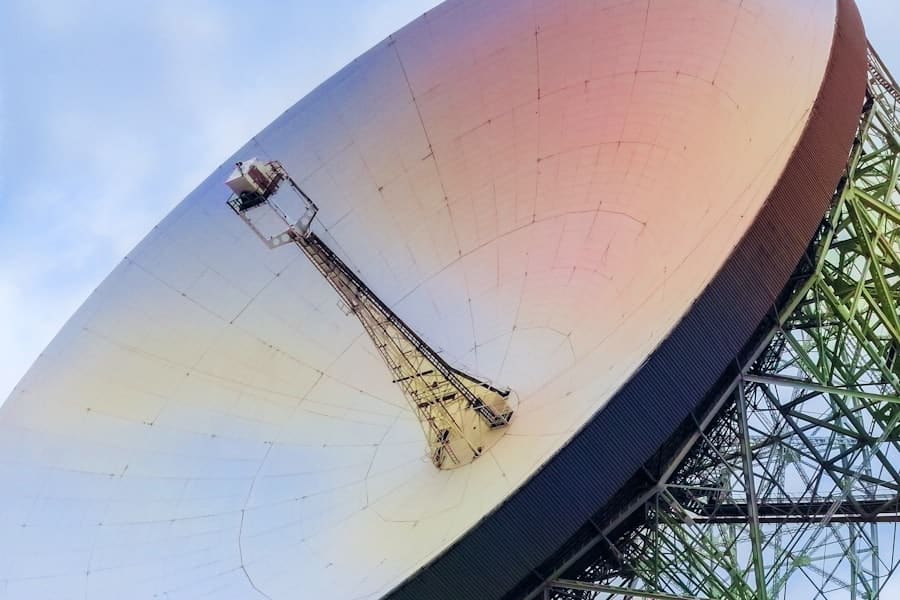The integration of artificial intelligence (AI) into satellite communication systems marks a transformative era in the realm of telecommunications and data transmission. As the demand for high-speed connectivity and reliable communication continues to surge, the efficiency of satellite systems becomes paramount. AI technologies, with their ability to analyze vast amounts of data and make real-time decisions, are poised to revolutionize how satellites operate, manage resources, and interact with ground stations.
The advent of AI in satellite communication is not merely a trend; it represents a fundamental shift in how we approach the challenges of bandwidth allocation, signal processing, and network management. By leveraging machine learning algorithms and advanced data analytics, satellite operators can gain insights that were previously unattainable.
This capability allows for more informed decision-making processes, ultimately leading to improved service delivery and user experience. As we delve deeper into the various applications of AI within satellite communication, it becomes evident that this technology is not just an enhancement but a necessity for future-proofing global communication networks.
Key Takeaways
- AI has revolutionized satellite communication efficiency by automating processes, enabling predictive maintenance, and improving signal processing.
- Automation of satellite communication processes has streamlined operations, reduced human error, and increased overall efficiency.
- Predictive maintenance and fault detection using AI algorithms have helped in identifying and addressing potential issues before they escalate, minimizing downtime and costs.
- Dynamic resource allocation and frequency management with AI have optimized satellite communication networks, ensuring efficient use of resources and reducing interference.
- Enhanced signal processing and interference reduction through AI technologies have improved the quality and reliability of satellite communication.
Automation of Satellite Communication Processes
One of the most significant advantages of incorporating AI into satellite communication is the automation of various processes that were traditionally manual and time-consuming. Automation streamlines operations, reduces human error, and enhances overall efficiency. For instance, tasks such as satellite tracking, telemetry data analysis, and command execution can be automated using AI algorithms.
These systems can continuously monitor satellite positions and health status, automatically adjusting operations based on real-time data without requiring constant human oversight. Moreover, automation extends to the management of ground stations and their interactions with satellites. AI can facilitate automated scheduling of communication windows, ensuring optimal use of available bandwidth while minimizing latency.
This is particularly crucial in scenarios where multiple satellites are in operation, as it allows for seamless handovers and coordination between different systems. By automating these processes, satellite operators can focus on strategic planning and innovation rather than being bogged down by routine operational tasks.
Predictive Maintenance and Fault Detection
Predictive maintenance is another area where AI significantly enhances satellite communication systems. Traditional maintenance practices often rely on scheduled inspections or reactive measures following a failure. However, with AI-driven predictive analytics, operators can anticipate potential issues before they escalate into critical failures.
By analyzing historical performance data and identifying patterns, AI algorithms can predict when a satellite component is likely to fail or require maintenance. For example, machine learning models can be trained on telemetry data from satellites to detect anomalies that may indicate impending hardware malfunctions. This proactive approach not only extends the lifespan of satellite systems but also reduces downtime and maintenance costs.
In addition to hardware monitoring, AI can also assess software performance and detect vulnerabilities that could compromise communication integrity. By implementing predictive maintenance strategies powered by AI, satellite operators can ensure higher reliability and service continuity.
Dynamic Resource Allocation and Frequency Management
Dynamic resource allocation is essential for optimizing the use of limited bandwidth in satellite communication networks. AI plays a crucial role in managing frequency allocation dynamically based on real-time demand and network conditions. Traditional static allocation methods often lead to inefficiencies, where certain frequencies may be underutilized while others become congested.
AI algorithms can analyze traffic patterns and user demands to allocate frequencies more effectively. For instance, during peak usage times, AI systems can automatically reallocate bandwidth to high-demand areas or applications, ensuring that users experience minimal latency and optimal performance. This dynamic approach not only enhances user satisfaction but also maximizes the overall capacity of the satellite network.
Furthermore, AI can assist in spectrum management by predicting interference patterns and adjusting frequencies accordingly to minimize disruptions in service.
Enhanced Signal Processing and Interference Reduction
Signal processing is a critical component of satellite communication, as it directly impacts the quality and reliability of transmitted data. AI technologies have introduced advanced signal processing techniques that enhance the ability to filter out noise and reduce interference. Machine learning algorithms can be trained to recognize patterns in signal degradation caused by environmental factors or equipment malfunctions.
For example, deep learning models can analyze received signals in real-time to distinguish between legitimate data and interference caused by atmospheric conditions or other satellites. By employing these advanced techniques, operators can improve signal clarity and reduce error rates significantly. Additionally, AI can facilitate adaptive modulation schemes that adjust transmission parameters based on current signal quality, further enhancing communication reliability.
Improved Satellite Constellation Management
Real-time Monitoring and Optimization
Through advanced algorithms, operators can monitor the health and performance of each satellite in real-time, making informed decisions about resource allocation and operational adjustments.
Collision Avoidance Strategies
AI can also assist in collision avoidance strategies by predicting potential conflicts between satellites or with space debris. By analyzing orbital trajectories and velocities, AI systems can recommend course corrections or adjustments to maintain safe distances between satellites.
Ensuring Uninterrupted Service
This capability is crucial as the number of active satellites continues to grow, necessitating sophisticated management solutions to prevent accidents and ensure uninterrupted service.
AI-Enabled Earth Observation and Data Analysis
The application of AI in earth observation through satellites has opened new frontiers in data analysis and interpretation. Satellites equipped with advanced sensors collect vast amounts of data related to climate change, urban development, agriculture, and disaster response. However, extracting meaningful insights from this data requires sophisticated analytical tools that can process information at scale.
AI algorithms excel in analyzing complex datasets quickly and accurately. For instance, machine learning models can identify patterns in satellite imagery that indicate changes in land use or environmental conditions over time. This capability is invaluable for governments and organizations involved in environmental monitoring or urban planning.
By automating the analysis process, stakeholders can make timely decisions based on accurate data insights, ultimately leading to more effective policies and interventions.
Future Implications and Challenges of AI in Satellite Communication
While the integration of AI into satellite communication presents numerous advantages, it also brings forth challenges that must be addressed to fully realize its potential. One significant concern is the ethical implications surrounding data privacy and security. As AI systems become more autonomous in decision-making processes, ensuring that they operate within ethical boundaries becomes paramount.
The potential for misuse or unintended consequences necessitates robust governance frameworks that guide the development and deployment of AI technologies in this domain. Additionally, the reliance on AI introduces vulnerabilities related to cybersecurity. As satellite systems become increasingly interconnected and dependent on AI-driven processes, they may become attractive targets for cyberattacks.
Ensuring the integrity of these systems requires ongoing investment in cybersecurity measures and continuous monitoring for potential threats. In conclusion, while the future of AI in satellite communication holds immense promise for enhancing efficiency and operational capabilities, it is essential to navigate the associated challenges thoughtfully. By addressing ethical considerations and strengthening cybersecurity measures, stakeholders can harness the full potential of AI technologies to create a more connected and resilient world through satellite communication systems.
If you are interested in the latest technology trends, you may also want to check out this article on the top trends in digital marketing for 2023. It provides valuable insights into how businesses are leveraging digital platforms to reach their target audience effectively. Just like how AI is enhancing satellite communication efficiency, digital marketing strategies are constantly evolving to keep up with the changing landscape of technology.
FAQs
What is AI?
AI, or artificial intelligence, refers to the simulation of human intelligence in machines that are programmed to think and learn like humans.
How is AI enhancing satellite communication efficiency?
AI is enhancing satellite communication efficiency by optimizing the use of satellite resources, improving signal processing, reducing interference, and automating network management tasks.
What are the benefits of using AI in satellite communication?
The benefits of using AI in satellite communication include improved data transmission speeds, enhanced network reliability, reduced operational costs, and the ability to adapt to changing communication demands.
How does AI optimize the use of satellite resources?
AI optimizes the use of satellite resources by analyzing data traffic patterns, predicting future demand, and dynamically allocating bandwidth and power to maximize efficiency.
How does AI improve signal processing in satellite communication?
AI improves signal processing in satellite communication by reducing noise and distortion, enhancing signal quality, and enabling real-time adjustments to optimize data transmission.
How does AI reduce interference in satellite communication?
AI reduces interference in satellite communication by identifying and mitigating sources of interference, dynamically adjusting frequencies and power levels, and optimizing antenna pointing and tracking.
How does AI automate network management tasks in satellite communication?
AI automates network management tasks in satellite communication by monitoring system performance, identifying potential issues, and autonomously implementing corrective actions to maintain optimal operation.



